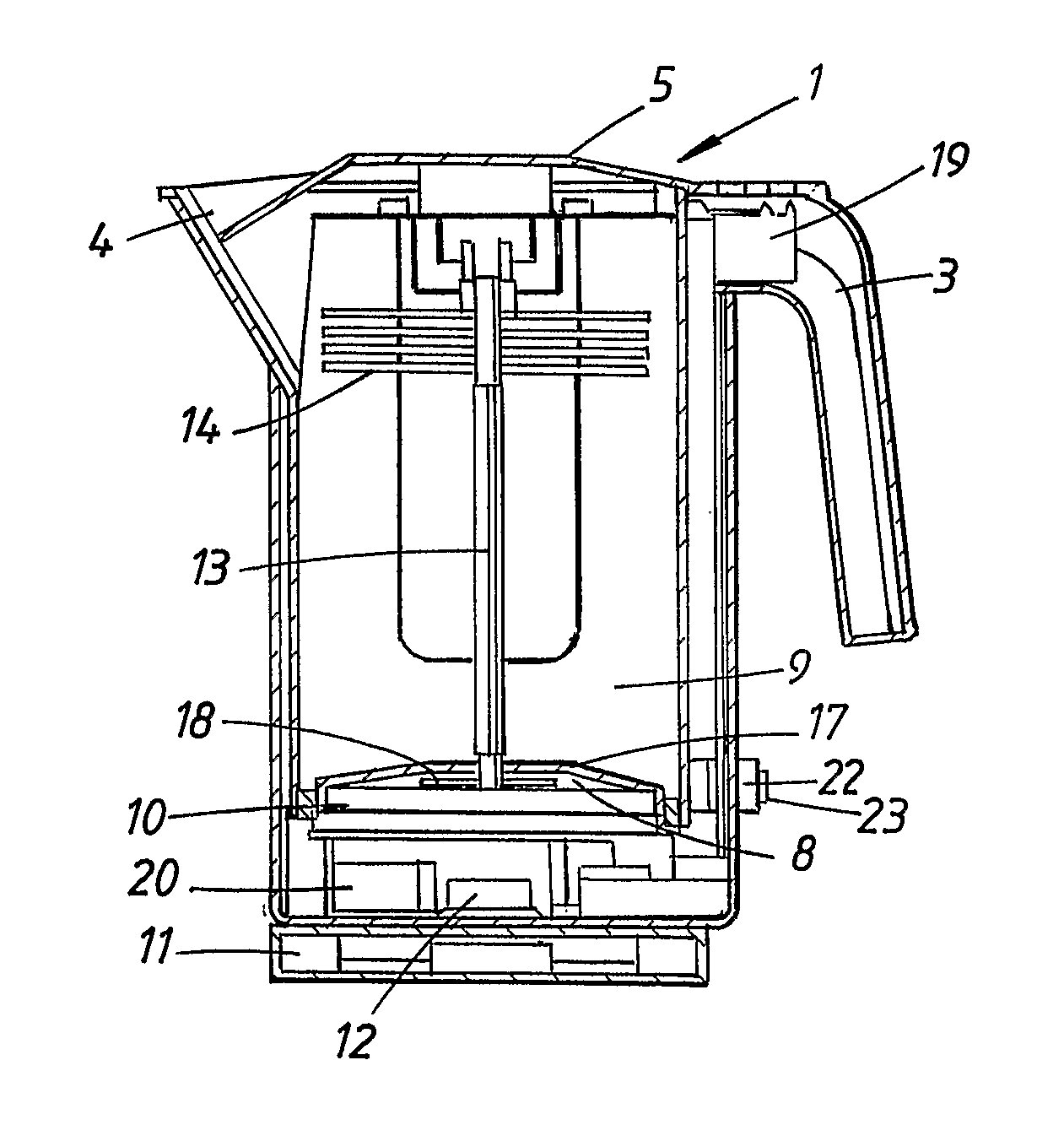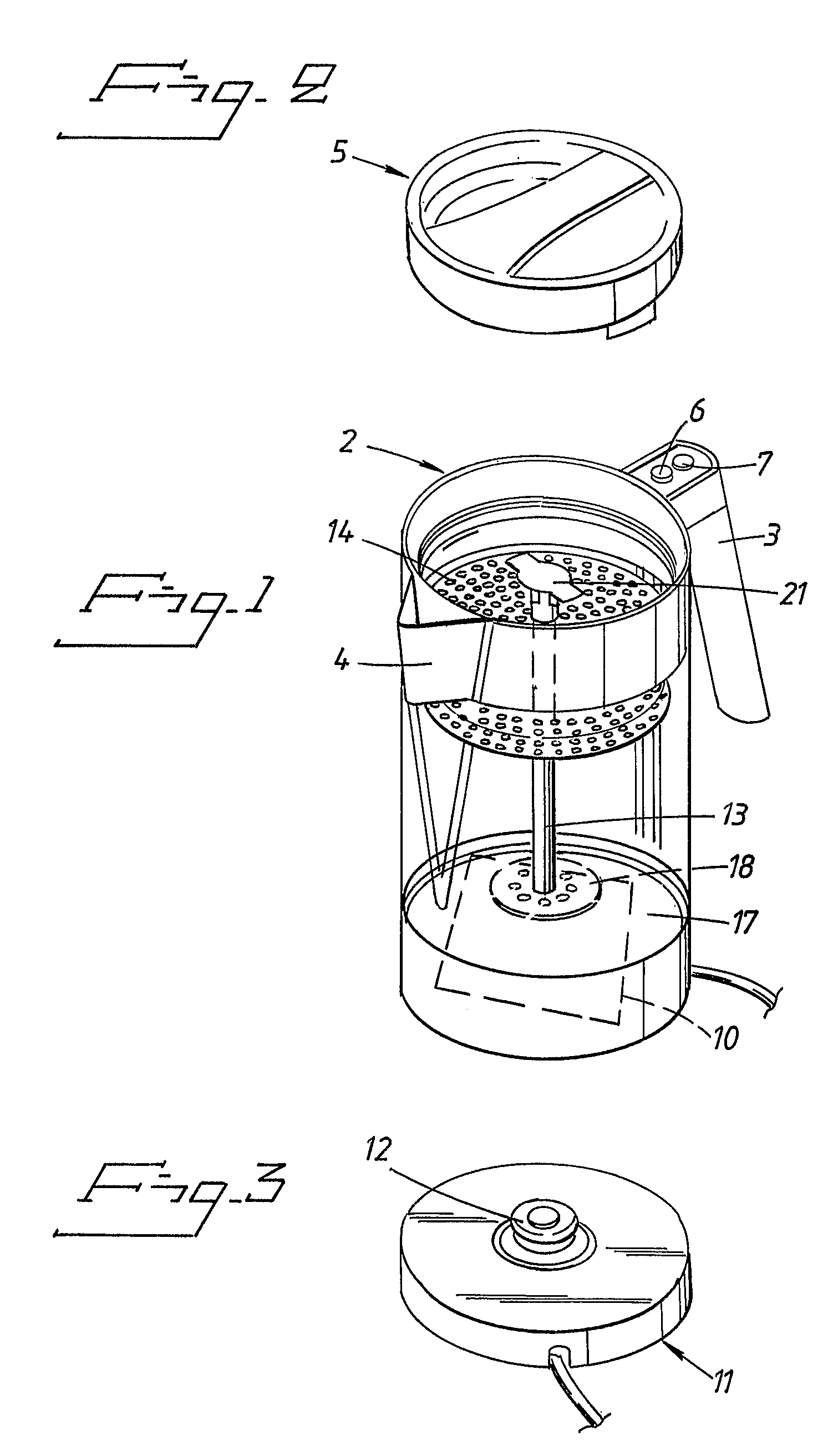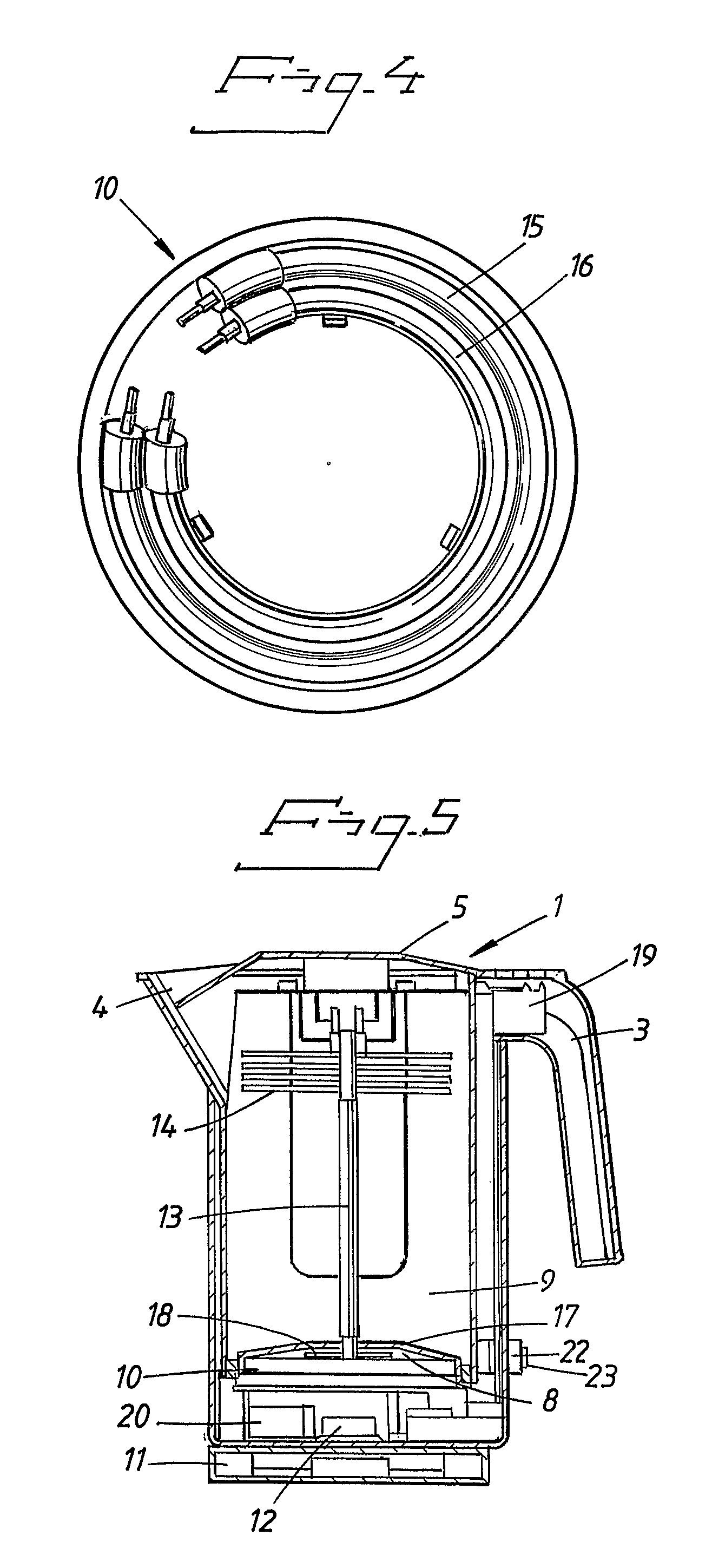Liquid cleaning device
a cleaning device and liquid technology, applied in distillation regulation/control, steam generation using steam absorption, combustion air/fuel air treatment, etc., can solve the problem of difficult to know when the filter is full, difficult to clean the filter, and easy to lose the effect of activated carbon quickly
- Summary
- Abstract
- Description
- Claims
- Application Information
AI Technical Summary
Benefits of technology
Problems solved by technology
Method used
Image
Examples
Embodiment Construction
[0029]In FIGS. 1-5, an embodiment of the present invention is shown, applied to a liquid cleaning device intended for purifying liquid from pollutants. However, it should be directly emphasized that the invention is in no way limited to this type of liquid cleaning device, but may be applied to various liquid cleaning devices.
[0030]FIG. 1 shows a perspective view of the liquid cleaning device 1 according to the present invention. The liquid cleaning device 1 comprises a vessel 2, which in the figures looks like an ordinary cylindrical pot having handle 3, spout 4 and lid 5. In order to be able to start and stop the cleaning process by hand, a start button 6 and a stop button 7 are arranged on the handle 3. The vessel 2 consists of a lower chamber 8 and an upper chamber 9, which are divided from each other by means of a cap 17 of some insulating material, see FIG. 5. In the lower chamber 8, the liquid is heated by a heating member 10, which is supplied with electrical energy from a b...
PUM
| Property | Measurement | Unit |
|---|---|---|
| area | aaaaa | aaaaa |
| gravity | aaaaa | aaaaa |
| power levels | aaaaa | aaaaa |
Abstract
Description
Claims
Application Information
 Login to View More
Login to View More - R&D
- Intellectual Property
- Life Sciences
- Materials
- Tech Scout
- Unparalleled Data Quality
- Higher Quality Content
- 60% Fewer Hallucinations
Browse by: Latest US Patents, China's latest patents, Technical Efficacy Thesaurus, Application Domain, Technology Topic, Popular Technical Reports.
© 2025 PatSnap. All rights reserved.Legal|Privacy policy|Modern Slavery Act Transparency Statement|Sitemap|About US| Contact US: help@patsnap.com



